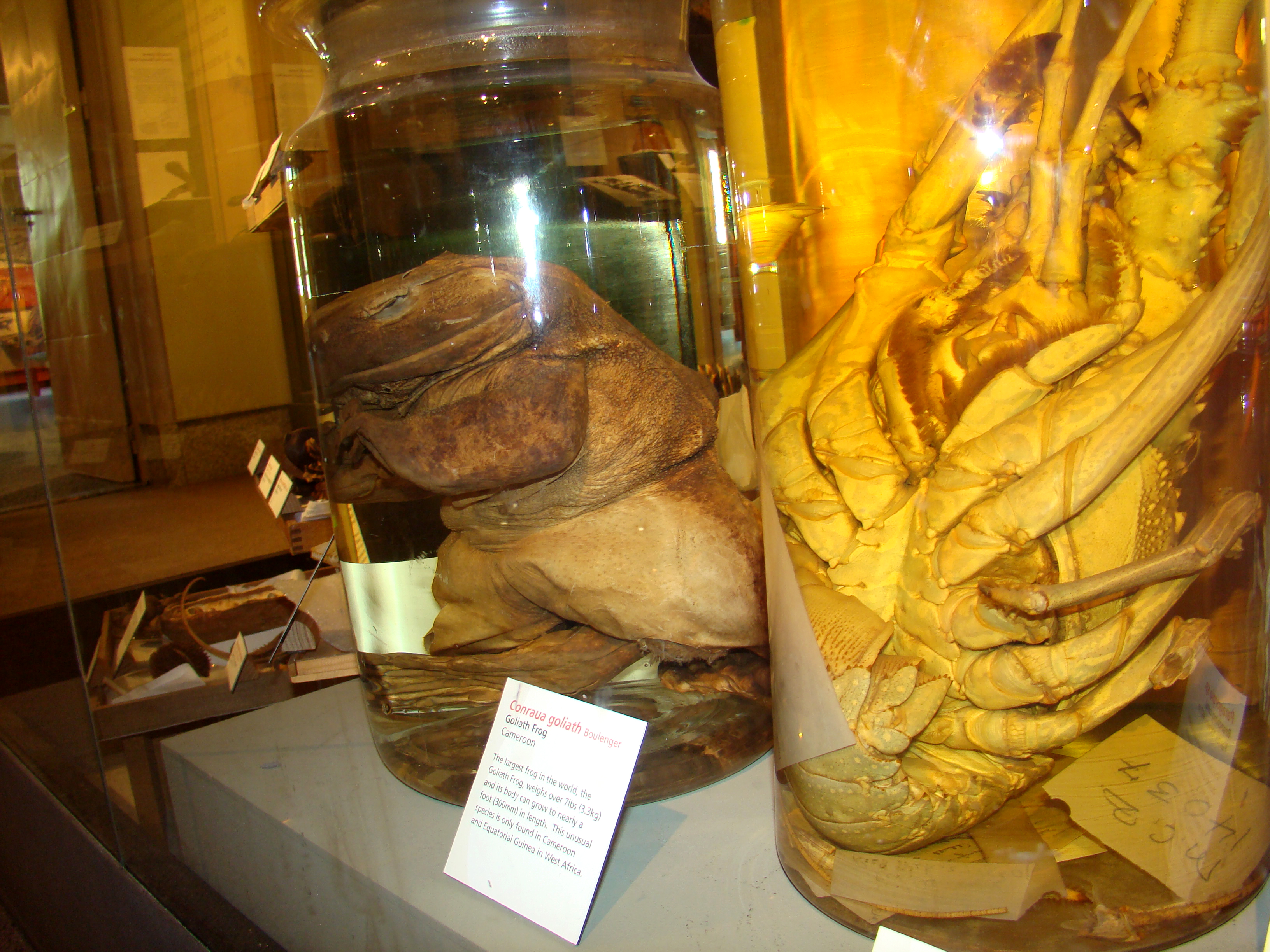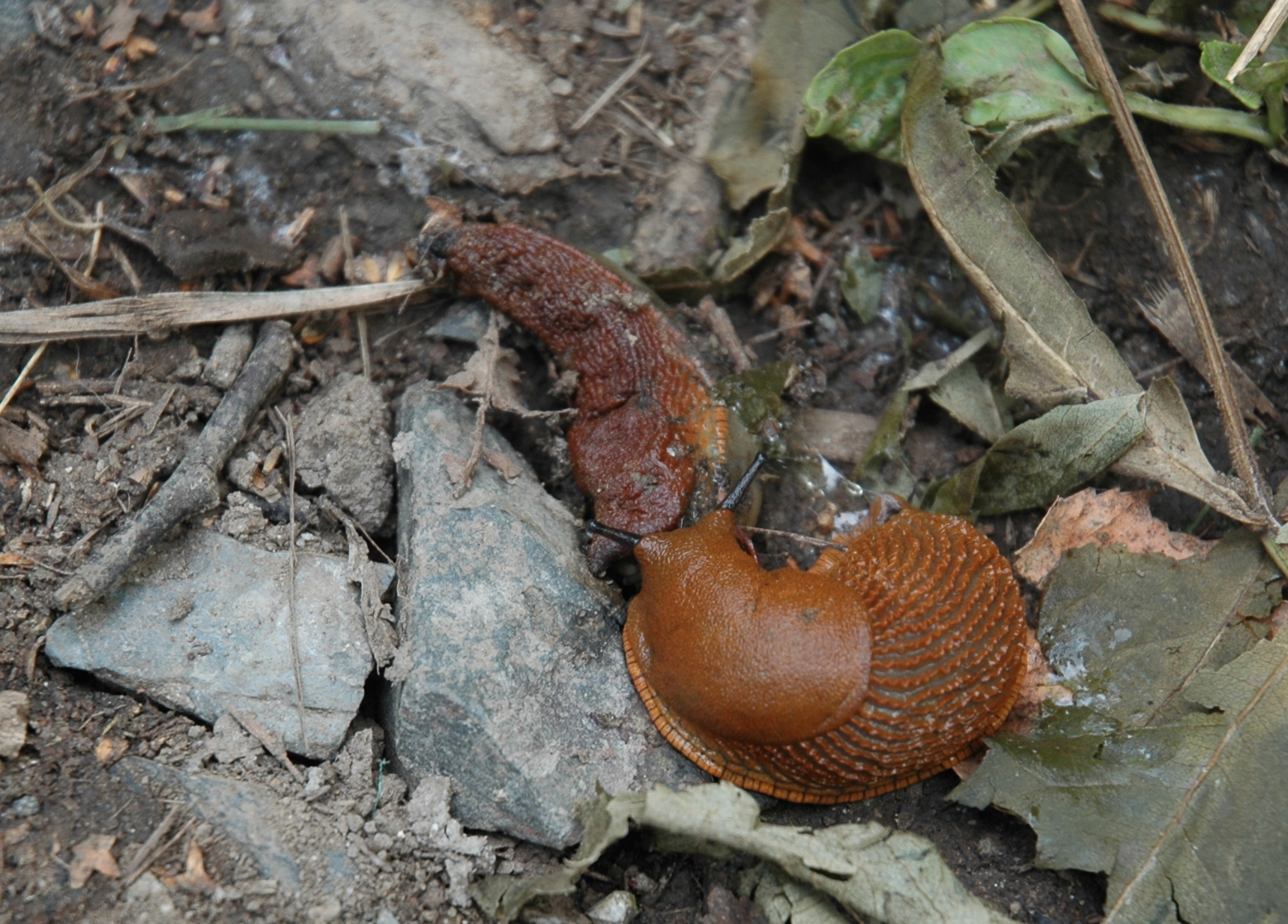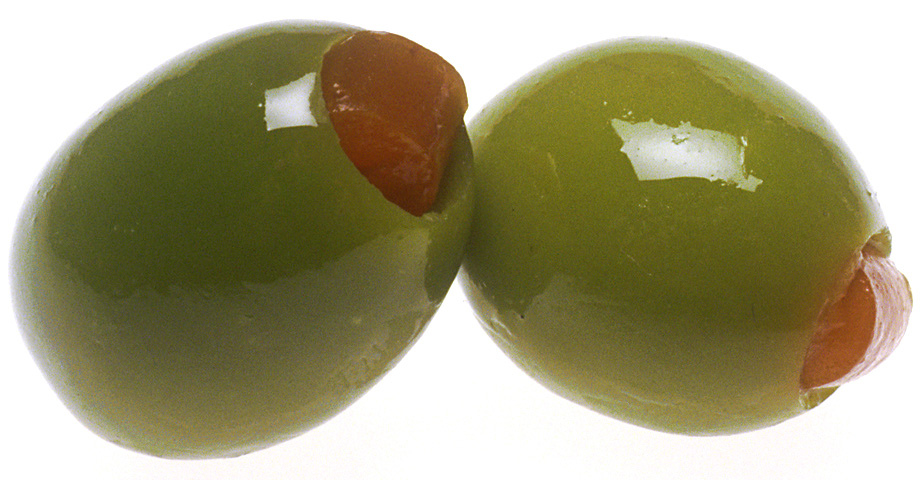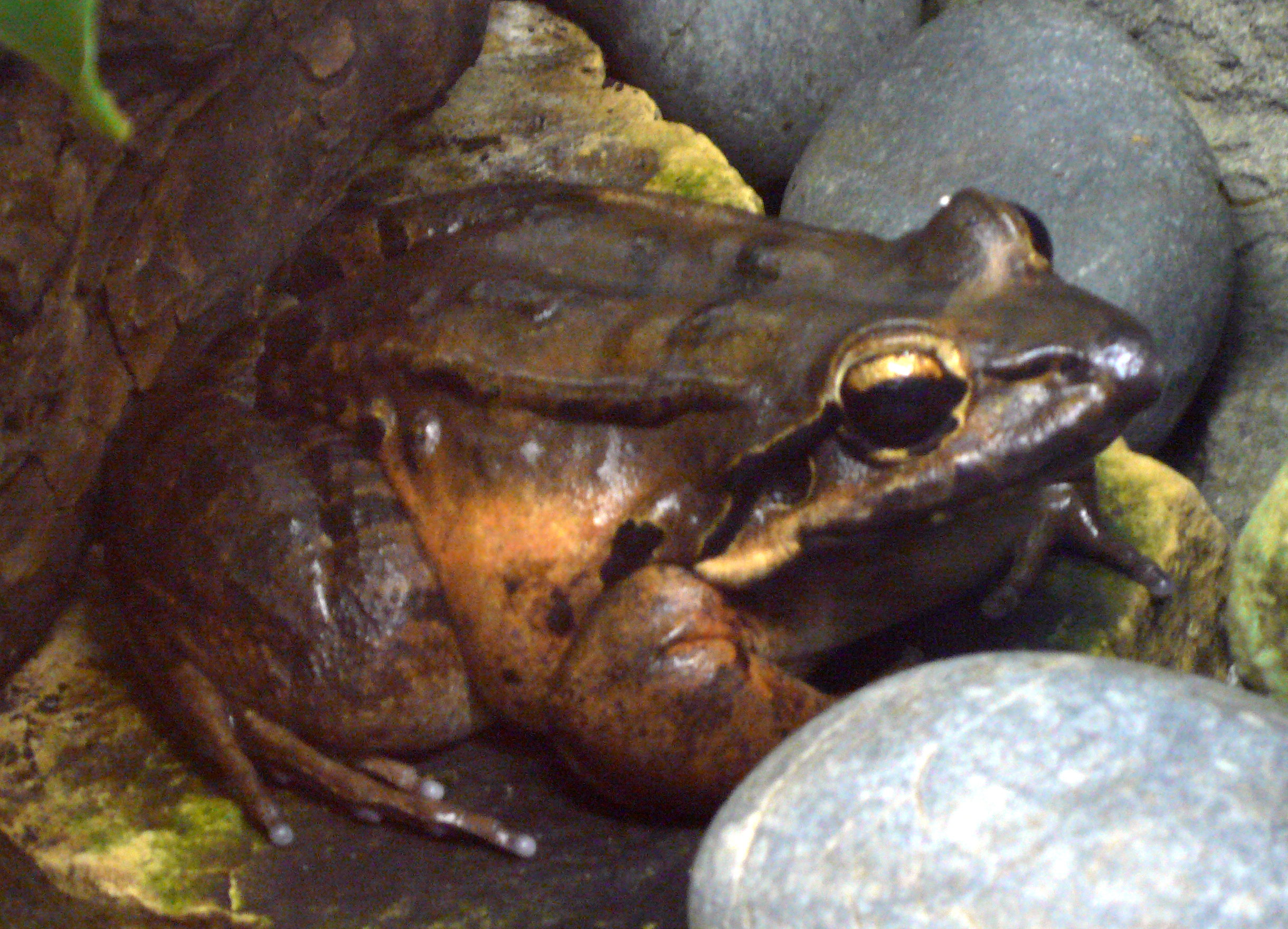|
Calyptocephalella
''Calyptocephalella'' is a genus of frogs in the family Calyptocephalellidae. It is represented by a single living species, ''Calyptocephalella gayi'', commonly known as the helmeted water toad, Chilean helmeted bull frog, or wide-mouthed toad. Additionally, there are a few extinct species that are only known from Late Cretaceous and Paleogene fossil remains from Patagonia in South America and the Antarctic Peninsula (at times when it was warmer and wetter). The helmeted water toad living today is aquatic to semi-aquatic, and found in deep ponds and reservoirs in central Chile and possibly adjacent west-central Argentina.AmphibiaWeb: Calyptocephalella gayi.' Retrieved 21 March 2015. This very large frog typically weighs up to , but sometimes considerably more. It is the world's second largest frog after the goliath frog. It is threatened by capture for human consumption, habitat loss, pollution, introduced species and the disease chytridiomycosis. It is often kept in herpetocult ... [...More Info...] [...Related Items...] OR: [Wikipedia] [Google] [Baidu] |
Calyptocephalellidae
The Calyptocephalellidae are a family of toads (although not true members of the Bufonidae) found in Chile containing two living genera, '' Calyptocephalella'' and '' Telmatobufo.'' The genus ''Calyptocephalella'' contains one living species, the helmeted water toad (''C. gayi''), which is very large and mostly aquatic. The genus ''Telmatobufo'' contains four species, '' T. australis'', '' T. bullocki'', '' T. ignotus'', and '' T. venustus''. All five living species within the family are considered threatened, with ''T. bullocki'' and ''T. venustus'' being classified as critically endangered. The family has been present in southern South America since the Late Cretaceous and were present in the Antarctic Peninsula during the Eocene. While originally widespread in Patagonia east of the Andes, they later became extinct in this region after the Late Miocene, likely due to increasingly cold and arid conditions. A particularly large indeterminate fossil species is known from the ... [...More Info...] [...Related Items...] OR: [Wikipedia] [Google] [Baidu] |
Telmatobius Macrostomus
''Telmatobius macrostomus'', also known as the Lake Junin (giant) frog or Andes smooth frog, is a very large and endangered species of frog in the family Telmatobiidae.Angulo, A. (2008). "Conservation needs of Batrachophrynus and Telmatobius frogs of the Andes of Peru." Conservation & Society 6(4): 328–333. DOI: 10.4103/0972-4923.49196 This completely aquatic frog is endemic to lakes and associated waters at altitudes of in the Andes of Junín and Pasco in central Peru. It has been introduced to slow-moving parts of the upper Mantaro River, although it is unclear if this population still persists.Sinsch, U. (1990). ''Froschlurche (Anura) der zentral-peruanischen Anden: Artdiagnose, Taxonomie, Habitate, Verhaltensökologie.'' Salamandra 26(2/3): 177- 214. Together with the closely related Amable Maria frog (''T. brachydactylus''), it is sometimes placed in the genus '' Batrachophrynus''. Ecology and appearance ''T. macrostomus'' is completely aquatic, and restricted t ... [...More Info...] [...Related Items...] OR: [Wikipedia] [Google] [Baidu] |
Goliath Frog
The goliath frog (''Conraua goliath''), otherwise known commonly as the giant slippery frog and the goliath bullfrog, is a species of frog in the family Conrauidae. The goliath frog is the largest living frog. Specimens can reach up to about in snout–vent length and in weight. This species has a relatively small habitat range in Cameroon and Equatorial Guinea. Its numbers are dwindling due to habitat destruction, collection for food, and the pet trade. Description The male and female are very similar. In a sample of 15 individuals, weights ranged between , and snout–vent lengths were between . In total length, including outstretched legs, the largest specimens can slightly exceed . The heaviest verified specimen, caught in the Muni River system in 1960, weighed and had a snout–vent length of . The longest verified specimen, caught in the same river system in 1966, weighed and had a snout–vent length of . There are unverified claims of considerably larger specimens ... [...More Info...] [...Related Items...] OR: [Wikipedia] [Google] [Baidu] |
Embrik Strand
Embrik Strand (2 June 1876 – 3 November 1947) was an entomologist and arachnologist who classified many insect and spider species, including the greenbottle blue tarantula. Life and career Strand was born in Ål, Norway. He studied at the University of Kristiania (now University of Oslo). Around 1900 he focused on collecting insect specimens from Norway. These are now deposited at the university's museum, where he worked as a curator from 1901 to 1903. After studying at the University of Oslo, Strand traveled in Norway from 1898 to 1903 collecting a great number of insects. For part of this time (1901–1903) he was a conservator in the museum of zoology of the university. He then left for Germany where he continued his studies of zoology at the University of Marburg (1903). He then worked with State Museum of Natural History Stuttgart (1905) and, later, that of Tübingen and then with Senckenberg Museum in Frankfurt. From 1907, he worked with Natural History Museum, Ber ... [...More Info...] [...Related Items...] OR: [Wikipedia] [Google] [Baidu] |
Frog
A frog is any member of a diverse and largely semiaquatic group of short-bodied, tailless amphibian vertebrates composing the order (biology), order Anura (coming from the Ancient Greek , literally 'without tail'). Frog species with rough skin texture due to wart-like parotoid glands tend to be called toads, but the distinction between frogs and toads is informal and purely cosmetic, not from taxonomy (biology), taxonomy or evolutionary history. Frogs are widely distributed, ranging from the tropics to subarctic regions, but the greatest concentration of species diversity is in tropical rainforest and associated wetlands. They account for around 88% of extant amphibian species, and are one of the five most diverse vertebrate orders. The oldest fossil "proto-frog" ''Triadobatrachus'' is known from the Early Triassic of Madagascar (250Myr, million years ago), but molecular clock, molecular clock dating suggests their divergent evolution, divergence from other amphibians may exte ... [...More Info...] [...Related Items...] OR: [Wikipedia] [Google] [Baidu] |
Cannibalism (zoology)
Cannibalism is the act of consuming another individual of the same species as food. Cannibalism is a common ecological interaction in the animal kingdom and has been recorded in more than 1,500 species. Human cannibalism is also well documented, both in ancient and in recent times. The rate of cannibalism increases in nutritionally poor environments as individuals turn to members of their own species as an additional food source.Elgar, M.A. & Crespi, B.J. (1992) ''Cannibalism: ecology and evolution among diverse taxa'', Oxford University Press, Oxford ngland New York. Cannibalism regulates population numbers, whereby resources such as food, shelter and territory become more readily available with the decrease of potential competition. Although it may benefit the individual, it has been shown that the presence of cannibalism decreases the expected survival rate of the whole population and increases the risk of consuming a relative. Other negative effects may include the increa ... [...More Info...] [...Related Items...] OR: [Wikipedia] [Google] [Baidu] |
Detritus
In biology, detritus ( or ) is organic matter made up of the decomposition, decomposing remains of organisms and plants, and also of feces. Detritus usually hosts communities of microorganisms that colonize and decomposition, decompose (Remineralisation, remineralise) it. Such microorganisms may be decomposers, detritivores, or coprophages. In terrestrial ecosystems detritus is present as plant litter and other organic matter that is intermixed with soil, known as soil organic matter. The detritus of aquatic ecosystems is organic substances suspended in the water and accumulated in depositions on the floor of the body of water; when this floor is a seabed, such a deposition is called marine snow. Theory The remains of decaying plants or animals, or their tissue parts, and feces gradually lose their form due to physical processes and the action of decomposers, including grazers, bacteria, and fungi. Decomposition, the process by which organic matter is decomposed, occurs in ... [...More Info...] [...Related Items...] OR: [Wikipedia] [Google] [Baidu] |
Olive (color)
Olive is a dark yellowish-green color, like that of unripe or green olives. As a color word in the English language, it appears in late Middle English. Variations Olivine Olivine is the typical color of the mineral olivine. The first recorded use of ''olivine'' as a color name in English was in 1912. Olive drab Olive drab is variously described as a "A brownish-green colour" (''Oxford English Dictionary'');" Olive Drab, N." Oxford English Dictionary, Oxford UP, July 2023. "a shade of greenish-brown" (''Webster's New World Dictionary''); "a dark gray-green" (''MacMillan English dictionary''); "a grayish olive to dark olive brown or olive gray" (''American Heritage Dictionary''); or "A dull but fairly strong gray-green color" (''Collins English Dictionary''). It is widely used as a camouflage color for uniforms and equipment in the armed forces. The first recorded use of ''olive drab'' as a color name in English was in 1892. Drab is an older color name, from the mid ... [...More Info...] [...Related Items...] OR: [Wikipedia] [Google] [Baidu] |
Titicaca Water Frog
''Telmatobius culeus'', commonly known as the Titicaca water frog or Lake Titicaca frog, is a medium-large to very large and endangered species of frog in the family Telmatobiidae. It is entirely aquatic and found only in the Lake Titicaca basin, including rivers that flow into it and smaller connected lakes like Arapa, Lagunillas and Saracocha, in the Andean highlands of Bolivia and Peru. In reference to its excessive amounts of skin, it is sometimes jokingly referred to as the Titicaca scrotum frog. It is closely related to the more widespread and semiaquatic marbled water frog (''T. marmoratus''), which also occurs in shallow, coastal parts of Lake Titicaca, but lacks the excessive skin and it is generally smaller (although overlapping in size with some forms of the Titicaca water frog). Appearance Size In the late 1960s, an expedition led by Jacques Cousteau reported Titicaca water frogs up to in outstretched length and in weight, making these some of the largest excl ... [...More Info...] [...Related Items...] OR: [Wikipedia] [Google] [Baidu] |
Mountain Chicken
''Leptodactylus fallax'', commonly known as the mountain chicken or giant ditch frog, is a critically endangered species of frog that is native to the Caribbean islands of Dominica and Montserrat. The population declined by at least 80% from 1995 to 2004, with further significant declines later. A tiny wild population remains on Dominica where there are efforts to preserve it, but few or none survive in the wild on Montserrat and its survival now relies on a captive breeding project involving several zoos. The initial decline was linked to hunting for human consumption, along with habitat loss and natural disasters, but the most serious threat now appears to be the fungal disease chytridiomycosis, which was the primary cause of the most recent rapid decline. On Montserrat it is known as the mountain chicken, while on Dominica it is known as the crapaud, which is simply the French word for "toad". Etymology The mountain chicken is nicknamed such after being preyed upon as a loca ... [...More Info...] [...Related Items...] OR: [Wikipedia] [Google] [Baidu] |
American Bullfrog
The American bullfrog (''Lithobates catesbeianus''), often simply known as the bullfrog in Canada and the United States, is a large true frog native to eastern North America. It typically inhabits large permanent water bodies such as swamps, ponds, and lakes. Bullfrogs can also be found in manmade habitats such as pools, koi ponds, canals, ditches and culverts. The bullfrog gets its name from the sound the male makes during the breeding season, which sounds similar to a bull bellowing. The bullfrog is large and is commonly eaten throughout its range, especially in the southern United States where they are plentiful. Their presence as a food source has led to bullfrogs being distributed around the world outside of their native range. Bullfrogs have been introduced into the Western United States, South America, Western Europe, China, Japan, South Korea and southeast Asia. In these places they are considered an invasive species due to their voracious appetite and the large numbe ... [...More Info...] [...Related Items...] OR: [Wikipedia] [Google] [Baidu] |
Smooth-sided Toad
The smooth-sided toad or spotted toad (''Rhaebo guttatus''), formerly known as ''Bufo guttatus'', is a species of toad in the family Bufonidae. It is found in the Amazonian Bolivia, Brazil, Colombia, Ecuador, Peru, and Venezuela, as well as the Guianas (French Guiana, Guyana, and Suriname). Specimens from southern Peru, Bolivia, and Brazil might represent ''Rhaebo ecuadorensis'' described in 2012. Description Males growth to about snout–vent length. Females are larger, at up to , possibly even , in snout–vent length. The dorsal color is cream colored or very light brown to reddish brown. The belly is a darker shade. The species has a characteristically prominent preocular ridge that is present even in juveniles. The smooth sided toad secretes a toxin from a gland behind their eyes known as a bufotoxin, it has been known to cause heart failure in humans if ingested. This toxin is the toad's main line of defense against predators. Habitat and conservation Its natural habita ... [...More Info...] [...Related Items...] OR: [Wikipedia] [Google] [Baidu] |










